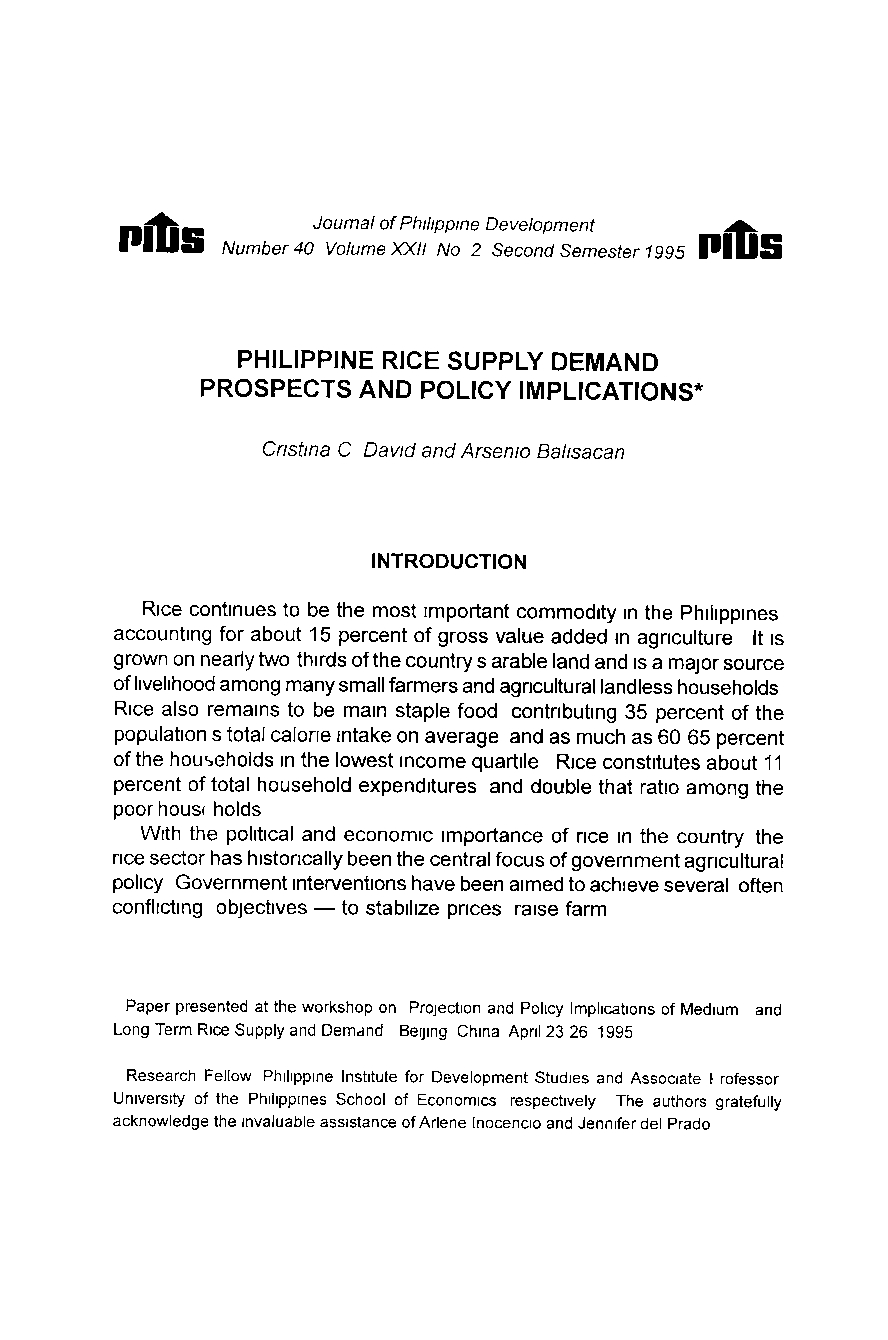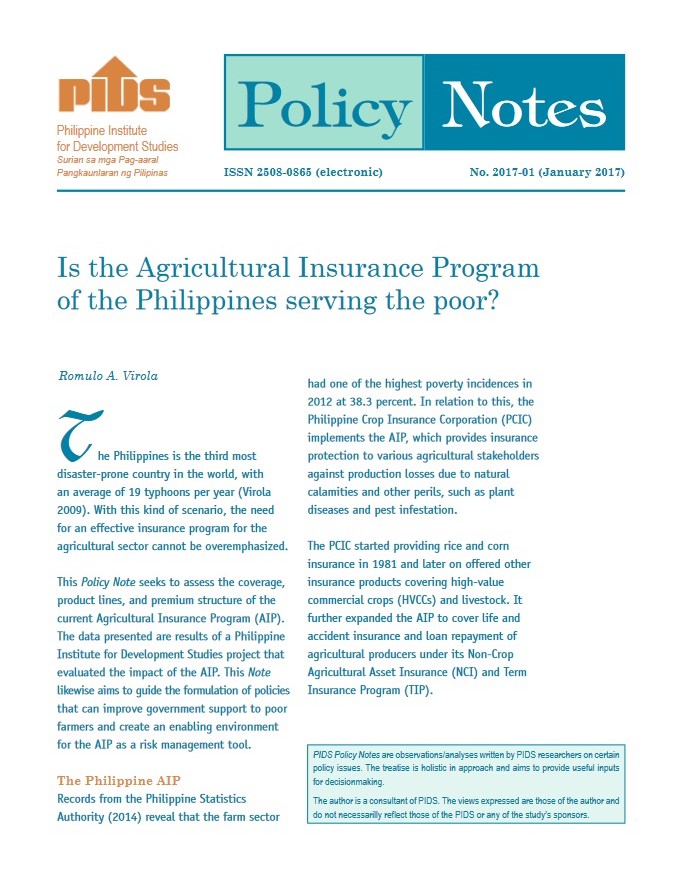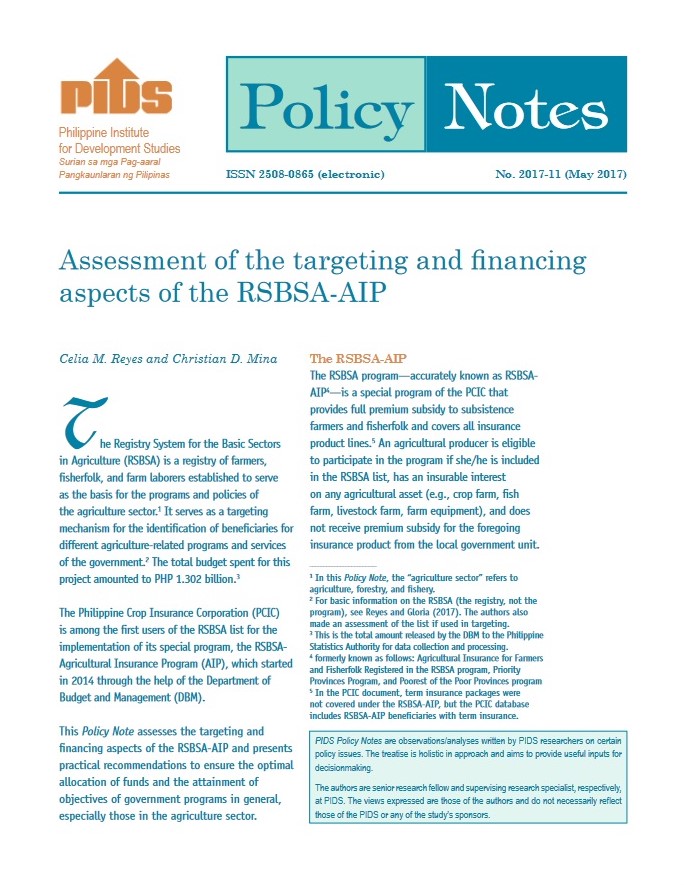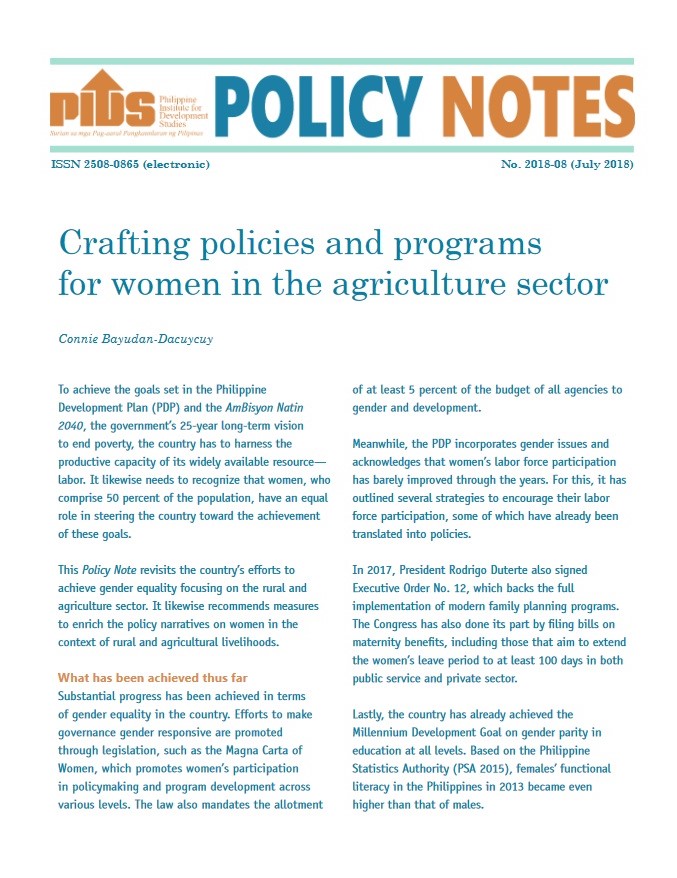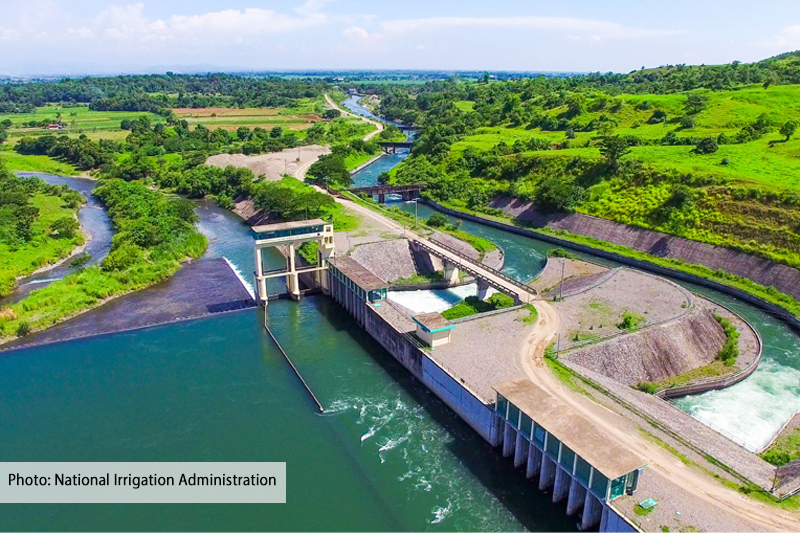Over the past three decades, the level and nature of government interventions and the relative importance of policy objectives have changed in response to changes in the domestic rice demand and supply factors. This paper analyzes the changes in the Philippine rice economy during the period and evaluates the policy options in light of the prospective rice supply and demand situation over the next decade and beyond.
Citations
This publication has been cited 7 times
In other Publications
- Aldaba, Fernando T.. 2002. Philippine development: A research journey through the Philippine Journal of Development. Philippine Journal of Development PJD, 29. Philippine Institute for Development Studies.
- Balisacan, Arsenio M. and Majah-Leah V. Ravago. 2003. The rice problem in the Philippines: trends, constraints, and policy imperatives. MPRA Paper 24865. University Library of Munich, Germany.
- Briones, Roehlano M.. 2010. Scenarios and options for productivity growth in Philippine agriculture: An application of the Agricultural Multimarket Model for Policy Evaluation (ample). Discussion Papers DP 2010-05. Philippine Institute for Development Studies.
- Crost, Benjamin et. al. 2018. Climate change, agricultural production and civil conflict: Evidence from the Philippines. Journal of Environmental Economics and Management, 88(C), 379-395. Elsevier.
- Crost, Benjamin et. al. 2015. Climate Change, Agricultural Production and Civil Conflict: Evidence from the Philippines. IZA Discussion Papers 8965. Institute of Labor Economics (IZA).
- Crost, Benjamin et. al. 2015. Climate change, agricultural production and civil conflict: Evidence from the Philippines. 205311. Agricultural and Applied Economics Association.
- EABER. 2010. Scenarios and options for productivity growth in Philippine agriculture: An application of the Agricultural Multimarket Model for Policy Evaluation (ample). Microeconomics Working Papers 22806. East Asian Bureau of Economic Research.

